Meal #8 – Northeastern Thailand / Isan
Not only was this meal a discovery of Northeastern Thailand, but it was also a discovery of Northeastern Melbourne. First we had to find out where the hell Alphington actually is, and secondly, how to bloody well get there. FYI it’s a solid 40 minute drive from our starting point in the Southeastern suburbs.
Not only was this meal a discovery of Northeastern Thailand, but it was also a discovery of Northeastern Melbourne. First we had to find out where the hell Alphington actually is, and secondly, how to bloody well get there. FYI it’s a solid 40 minute drive from our starting point in the Southeastern suburbs.
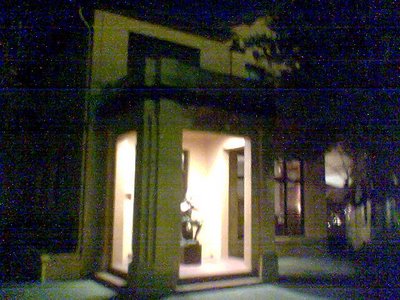
Paladarr
Thai Issan Restaurant
Cnr Rowe and Yarralea Streets
Alphington 3078
Lunch – Friday and Sunday from 12-2pm
Dinner – Wednesday to Sunday from 6pm until late.
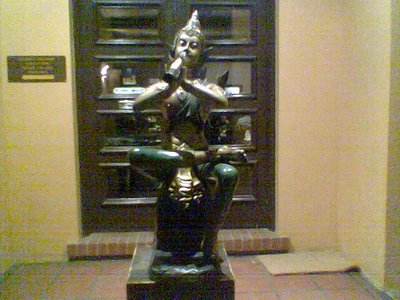
This meal is a tale of two trips. The first, on Saturday night, saw us arrive at the restaurant with our camera but without a reservation. The second was on Sunday night, which saw us with a reservation but without our camera. Consequently, the amazing quality of this week’s photographs is due to them being taken from a mobile phone camera.
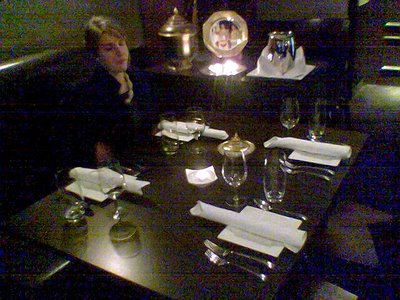
Paladarr is a stylish establishment which focuses on the Isan cuisine of Northeastern Thailand – a mixture of traditional Thai-style and Lao foods. It was fortunate that our resident Lao expert, Sai, was available to help critique the restaurant. Sai was joined by Rami and Caroline.
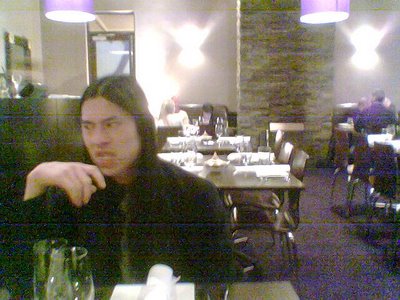
Entrée:
Miang Karm - The Famous Paladarr Appetiser – Share a delicious, lip-smacking selection of bright, fresh ingredients, which are highlighted in many of Chaloem's North-Eastern dishes. Choose your own ingredients, wrap them in a cupped chapoo leaf, add a topping of Tamarind sauce and enjoy the explosion of flavours! Your waiter will show you how!
Mains:
Larb Gai – Minced chicken with coriander, spring onion, mint, chilli, lemon juice, fish sauce and ground parched rice. Served with seasonal greens.
Yum Tua – A salad of whole macadamia and cashew nuts with a spicy sauce of chilli, ginger, coriander and tamarind juice.
Kaeng Om Gai – Chicken pieces cooked in a paste of lemongrass, galangal, chilli, lime leaves and red onion, in chicken stock. Garnished with spring onion, dill and shredded lime leaf. Traditionally this curry is prepared with an aromatic, salty fish Bla Raa. If requested, it will be prepared this way for you.
Rice:
Khao Pao – Aromatic steamed rice.
Khao Neeow – The Famous Issan sticky rice.
Entrée:
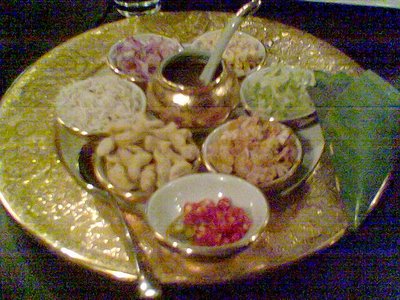
Our meal started with the first truly unique dish of our journey – Miang Karm. A plate, which resembled the traditional Jewish Passover Seder plate – a large, circular plate with several smaller plates on it containing a specific ingredient (http://en.wikipedia.org/wiki/Passover_Seder_Plate). However instead of a roasted lamb shank bone or a burnt, hard boiled egg, this Isan plate contained finely diced ginger and red onion, small pieces of lime and bird’s eye chilies, cashew nuts, dried coconut and dried prawns.
The waitress showed us how to fold the edible chapoo leaf into a bowl-like shape, in which with put our choice of the above ingredients, topping it with Tamarind sauce, and then stuffing the entire thing into our mouths with one gulp. We could still feel the bird’s eye chili well into the main course!
Mains:
If you thought that using our hands as our main eating implements would stop after the entrée you would be dead wrong. Eating the traditional sticky rice is a messy affair in which cutlery is useless. Sai, who has grown up with this cuisine, showed us how to handle the steaming hot rice without burning our hands, and then how to use the sticky rice to pick-up the Larb or curry.
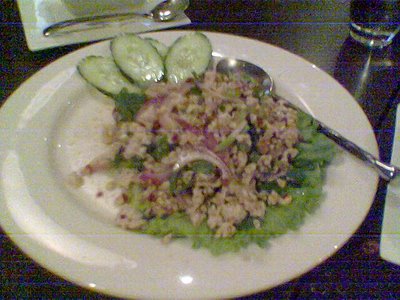
The Larb, which is a traditional dish in both Lao and Isan cuisine, was great and went well with the sticky rice – in fact it is hard to imagine eating it any other way. This dish was a nice mix of coriander and lemon juice with just a hint of chili. Sai lamented that there was not enough kick to it, but this might just be a regional difference in the preparation of this dish.
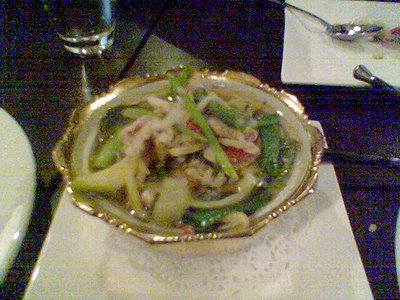
The Kaeng Om Gai, was a coconut milk-free curry that resembled a green curry in flavour. The addition of the traditional salty fish was optional, and we decided to give it a try. Unfortunately, the fish was so small that in cooking it melted into the broth, so although we got the flavour, we missed out on the pieces of fish with the meal.
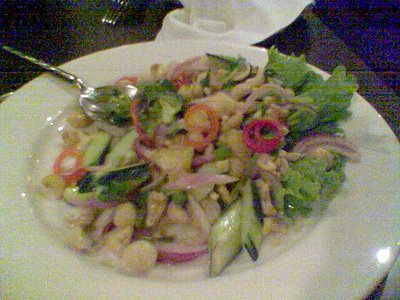
Finally we had a cashew and macadamia nut salad. This was a light salad that complemented the heaviness of the other dishes. The Yum Tua would make for a delicious summer salad, which could be enjoyed later in the year on the outside deck area available at Paladarr.
Overall:
This meal was a winner, not just because of the wonderful food, but because of the unique circumstances in which the staff actually encouraged us to eat with our hands in the traditional manner. At first, we felt, well not Sai, a bit self conscious eating with our hands in a restaurant, but we soon delved elbow deep into it.
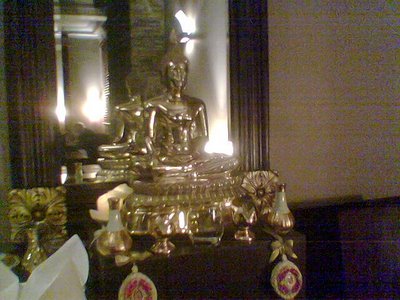
You are greeted at the front door of Paladarr by a life-sized statue of a Thai flutist, and although the restaurant was well decorated, they still made room for photos of the Thai royal family and for a little shrine to Buddha. The wait staff was friendly and accommodating, and the atmosphere of the restaurant is high-end with a surprisingly laid-back feel. The meal cost us $25 each and was well worth every cent.
2 comments:
Damn :( I missed the eating-with-your-hands meal. I can do that! *sigh*
I've heard that you're good with your hands :)
sorry, the pun was there and I had to take it...its a compulsion...
Post a Comment